How to Use Bondo as Wood Filler for Repairing Furniture
Learn how to use Bondo for repairing furniture. I used this same technique on this floral decoupage dresser and this vintage secretary desk.
Bondo is my favorite way to repair furniture.
Whether it’s filling knob holes so that I can use a different size, filling gouges for a smoother top, or repairing a chipped veneer, Bondo is the best way to fix all of these problems on furniture.
This post contains affiliate links. By purchasing an item through an affiliate link, I earn a small commission at no extra cost to you.
I bought a midcentury buffet recently that was lovely, but was well loved. There were many gouges in the top that needed to be repaired. It came with a hutch that had damage to the veneer.
Bondo is perfect for DIY furniture repair.
How to Use Bondo on Wood to Repair Furniture
When repairing the furniture, please note that Bondo has a very strong smell and should not be used inside. Use in a ventilated area and wear a mask if such smells bother you.
Why use bondo instead of wood filler?
Unlike normal wood filler, Bondo leaves a smooth finish without grainy spots. Your repaired furniture will feel silky smooth.
Plus, it doesn’t shrink as it dries. There’s nothing worse than filling holes only to realize that they need another coat of wood filler because it shrunk.
The only downside to Bondo is that it cannot be stained. However, if sanded enough, you are left with a smooth surface that is perfectly smooth.
Supplies Needed
- Bondo
- Bondo spreader*
- Paper plate or scrap wood
- Disposable spoon (or knife)
- Sander
- Sandpaper (grits ranging from 80 to 400)
- Shellac based primer
*The Bondo spreader is essential to making Bondo easier to work with. Don’t skip buying them. Unless you hate yourself. Then get it all over your hands too. 😉
How to Apply Bondo
- Place a small amount of Bondo on a paper plate. (Use less than you actually need, especially in warmer temperatures. It dries really fast.)
- Add the hardener.
- Stir it with a disposable spoon.
- Use the Bondo spreader to spread it on the area that needs to be repaired. Try to use a thin layer.
- Let it dry.
Sanding Bondo on Wood Furniture
- Start sanding. Start with the heaviest grit (80.) You will knock down the excess with this layer, but don’t remove too much.
This is after the 80 grit.
- Change your sandpaper to 120 grit. Try to smooth it out as best as you can.
- Use 220 grit. Use your hands to feel spots as you go where it needs more sanding.
- If it needs it, move to 400 grit. By now your wood should feel silky smooth.
Finishing the Furniture After Using Bondo
- Prime the wood. Bondo needs to be primed or it will leave spots where the paint absorbs differently. With such heavy sanding, I also exposed a lot of tannins in the wood, so I primed this piece with my favorite primer. It also seals in the smell of the Bondo.
- Paint as usual. I like dark colors because they hide flaws better. Flatter paint sheens hide the flaws as well. The finish won’t be perfect, but it will be a lot better!
Using Bondo on Wood FAQs
How do you apply Bondo smoothly?
Use the plastic applicator for a smooth application of Bondo. Sand it well after it dries.
Use thin coats, layering them if necessary.
Do you have to sand between coats of Bondo?
For best results, you should sand between coats of Bondo. This keeps the layer of Bondo thin and this helps keep it smooth. Thicker coats can be harder to get smooth.
How long does it take for Bondo to fully cure?
Bondo starts to dry in about 10 minutes, but will be fully cured in about 30 minutes.
Times may vary due to temperature and humidity.
Do you have to prime Bondo?
Yes, you should prime Bondo before painting. Without primer, the paint will absorb too much into the Bondo and the repair will be noticeable.
How long does it take for Bondo to dry before sanding?
You can usually sand within 10-15 minutes after applying Bondo.
Tips for Using Bondo for Furniture Repair
- Mix tiny batches because they dry fast once you mix in the hardener.
- Use your hands to feel where you need to sand more. Close your eyes if you need to.
- Thinner coats are easier to sand.
- If you fill drawer holes, don’t forget to fill the insides of the drawers as well.
- Clean your spreaders as you go. But don’t worry if it dries on there. The spreader is flexible and the Bondo will peel off because of the flexibility. If that doesn’t work, use a putty knife to scrape off the hard bits.
- If you get Bondo on your hands, wash them with oil to remove the stickiness. Or use a lovely sugar scrub.
Bondo also works great for:
- Filling knob holes
- Filling in chipped veneer
- Fixing damage from animals chewing on wood
- Rotten spots on wood (I’ve used it to fix a rotten spot on a door.)
You might also like:
- How to paint furniture white
- How to fill holes in a staircase before staining
- How to refinish a table top
Pin for Later!
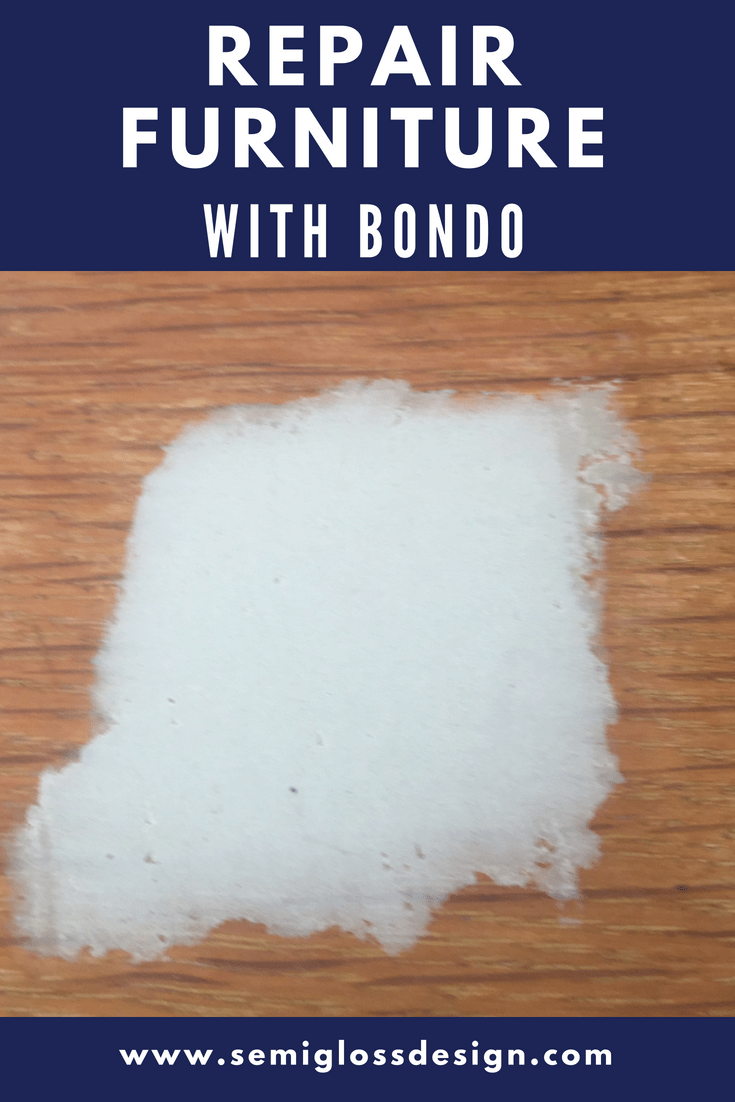

Emy is a vintage obsessed mama of 2 DIYer who loves sharing affordable solutions for common home problems. You don’t need a giant budget to create a lovely home. Read more…


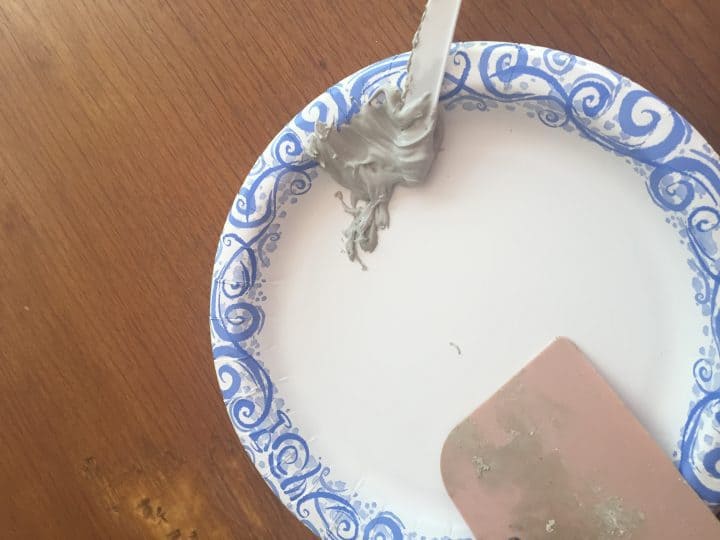
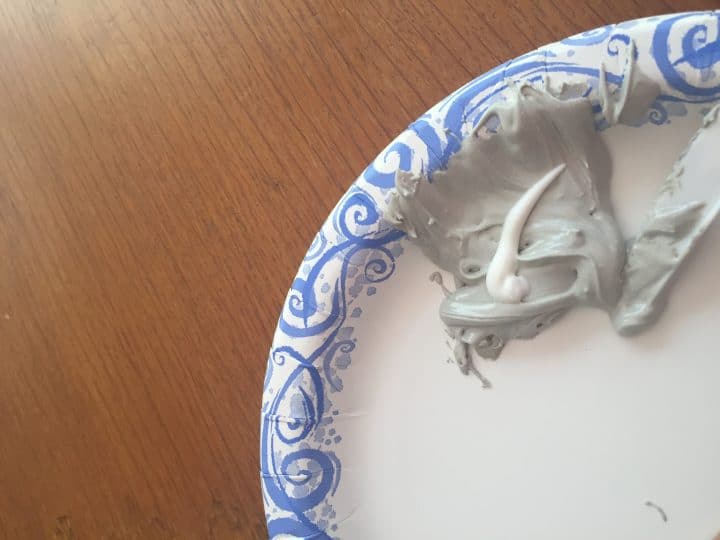
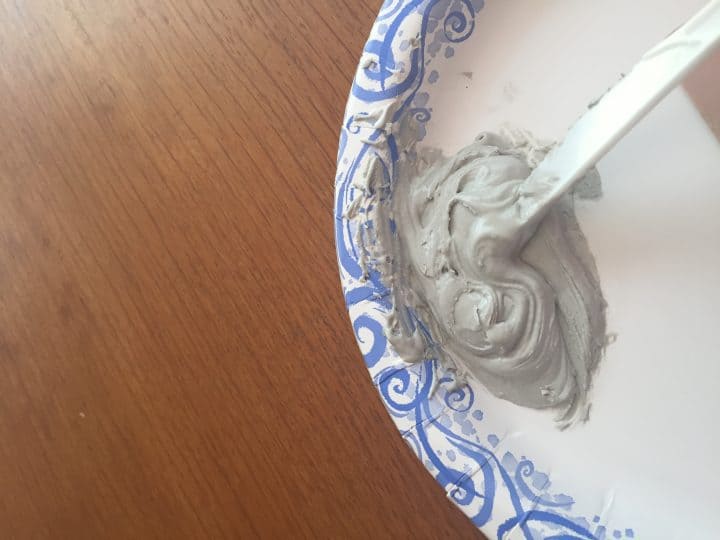
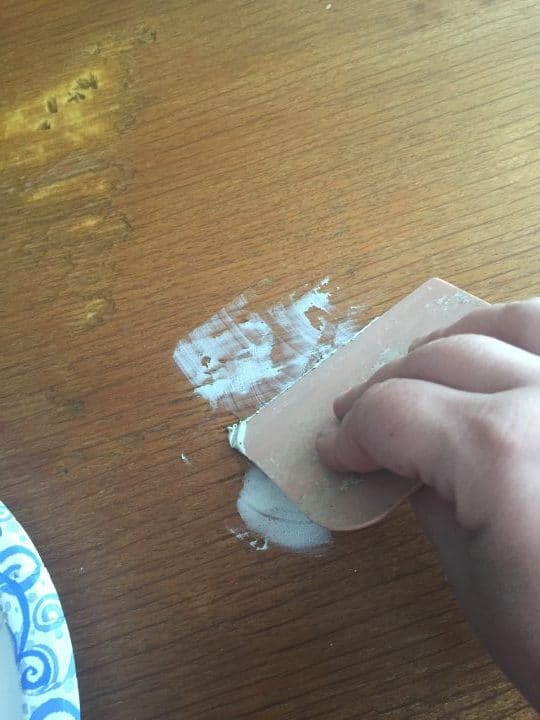
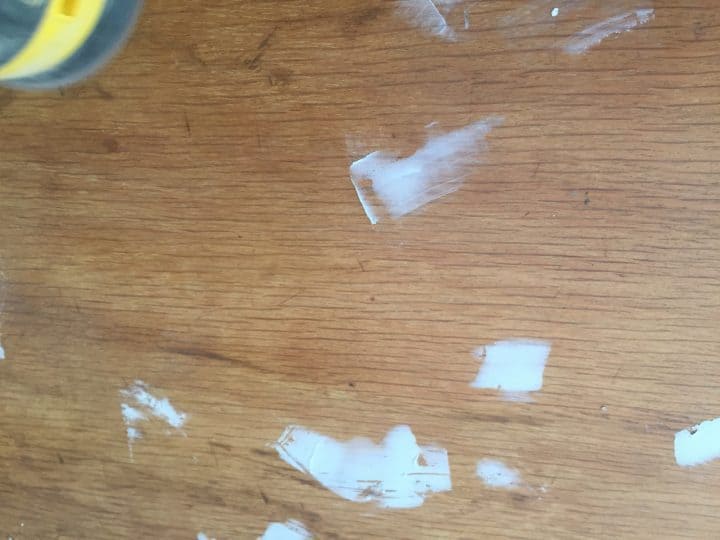
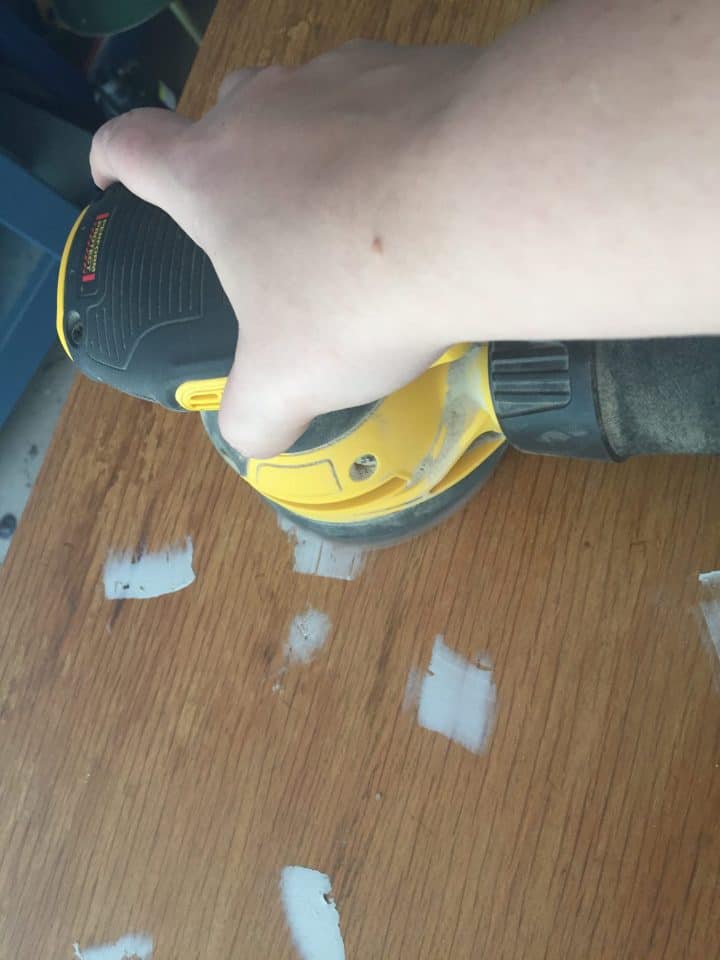 This is after the 80 grit.
This is after the 80 grit.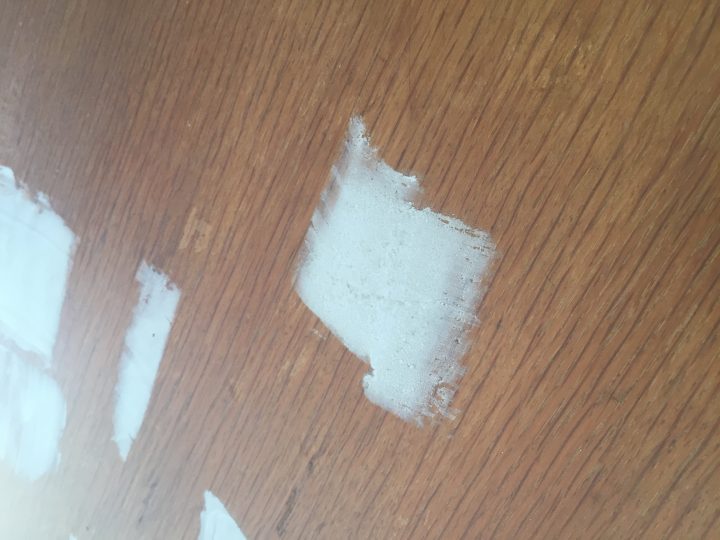
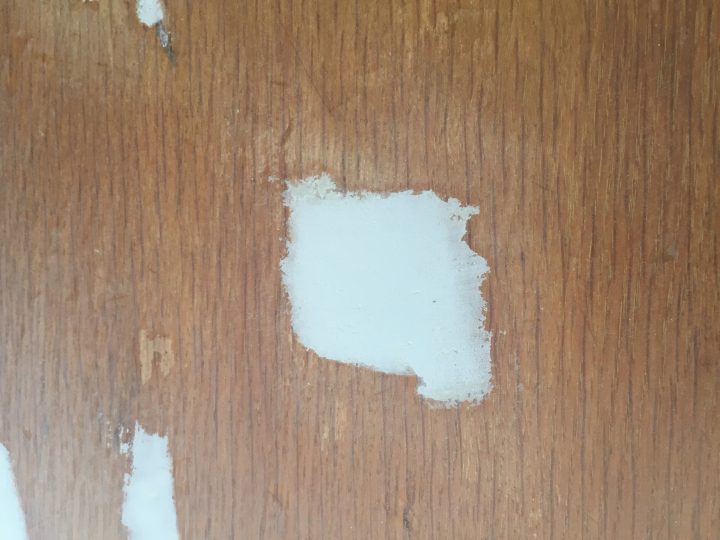
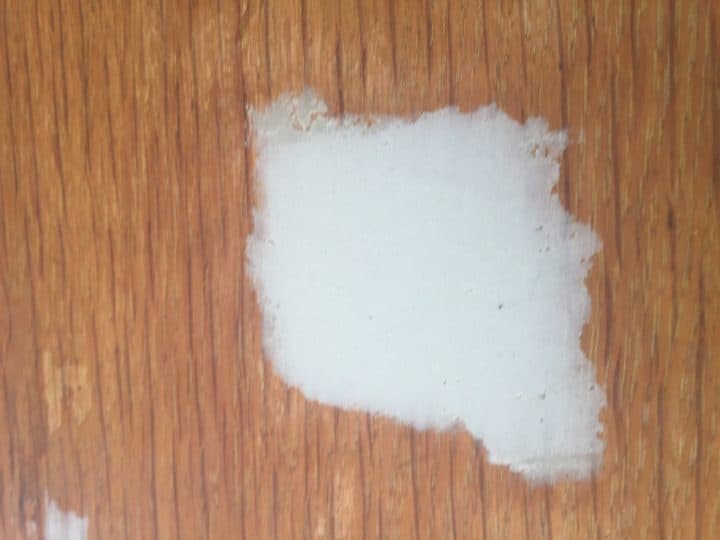
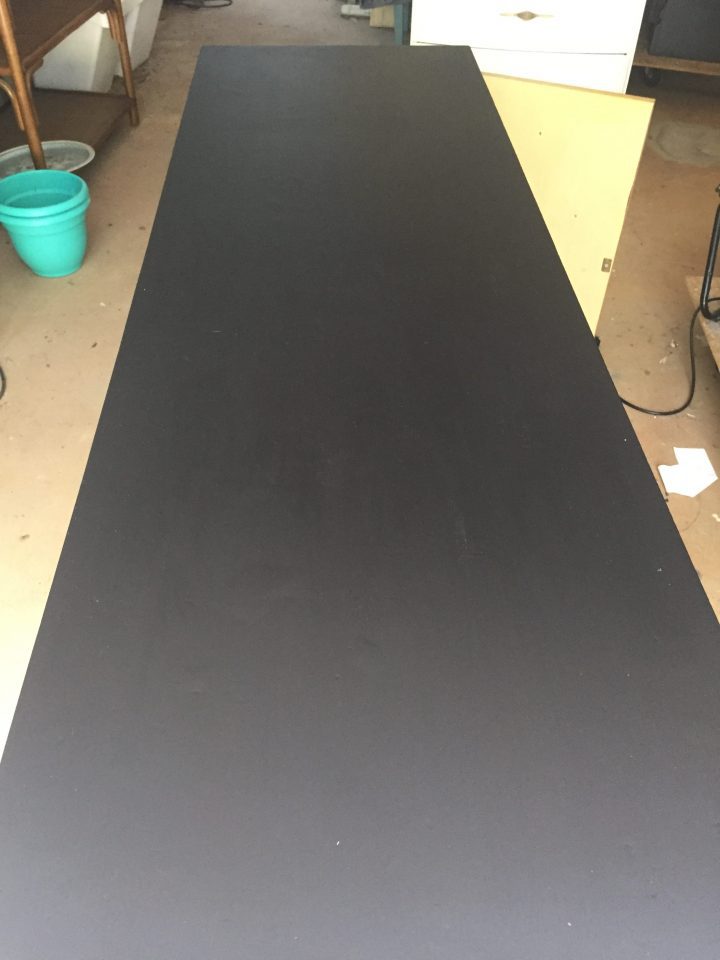
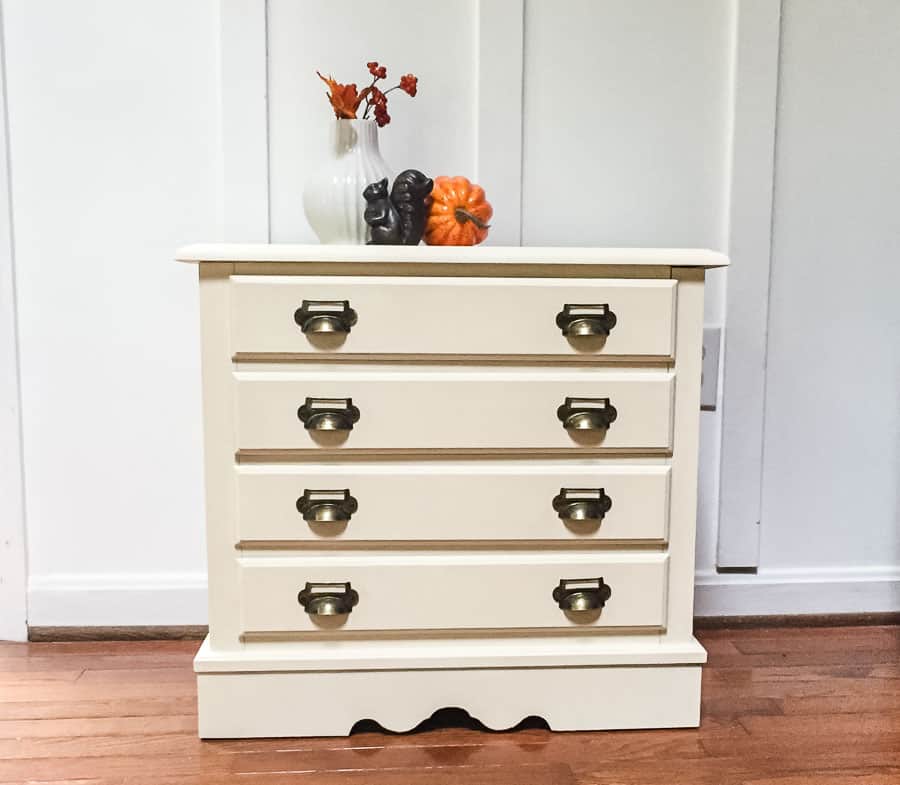
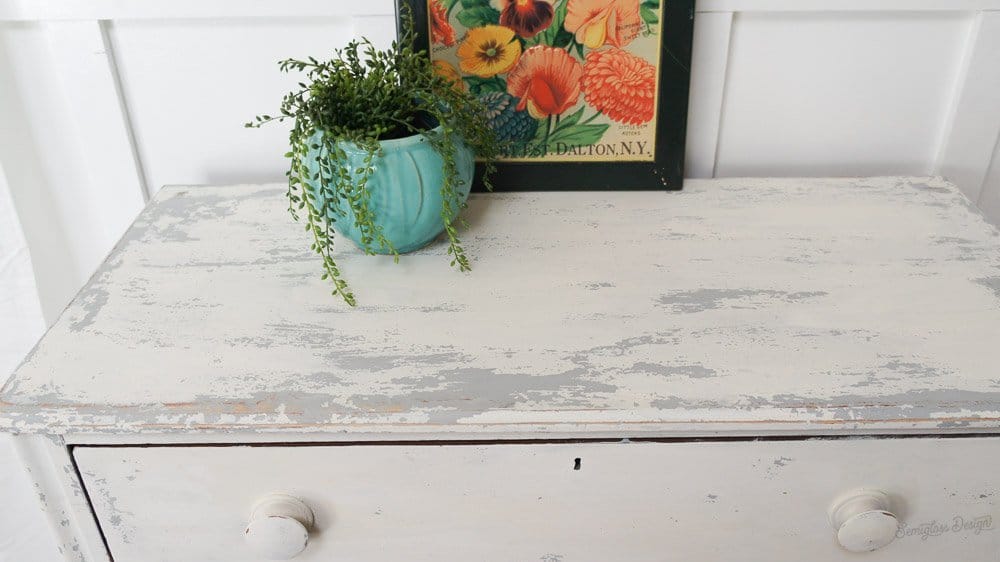
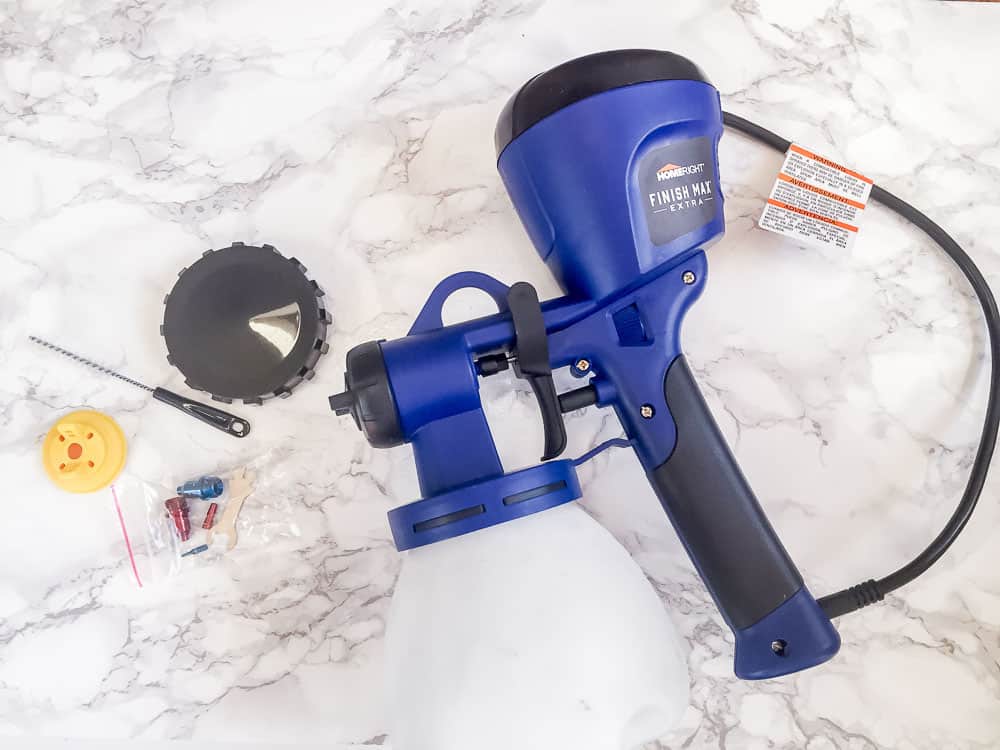
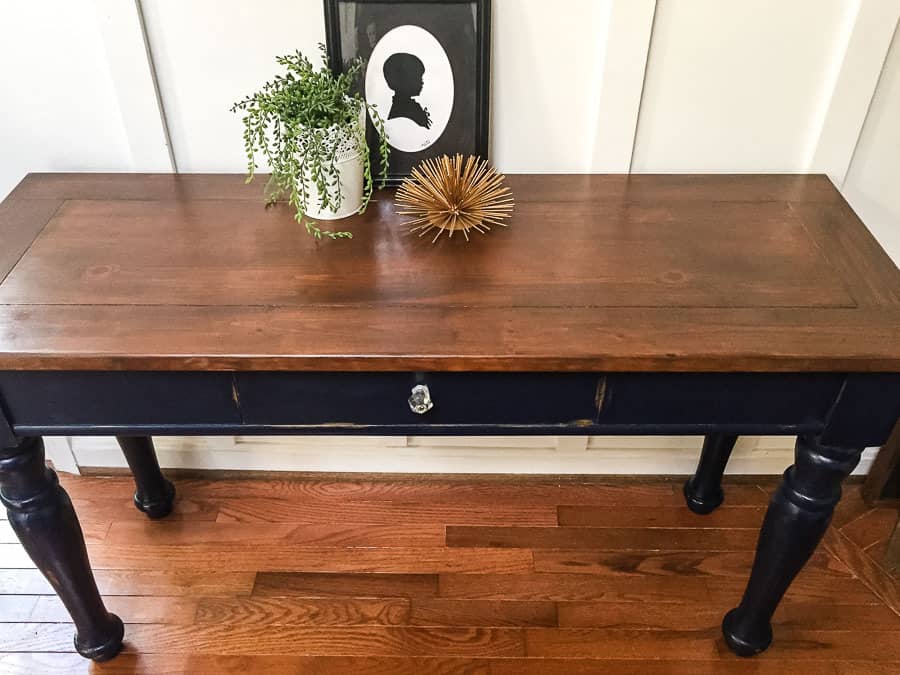
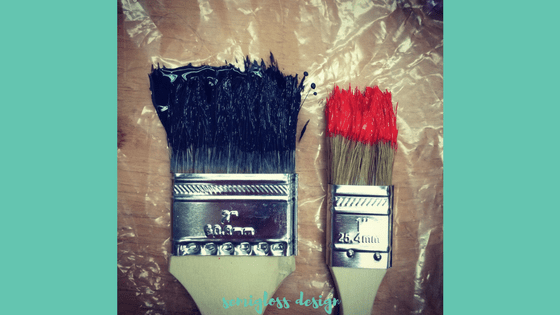
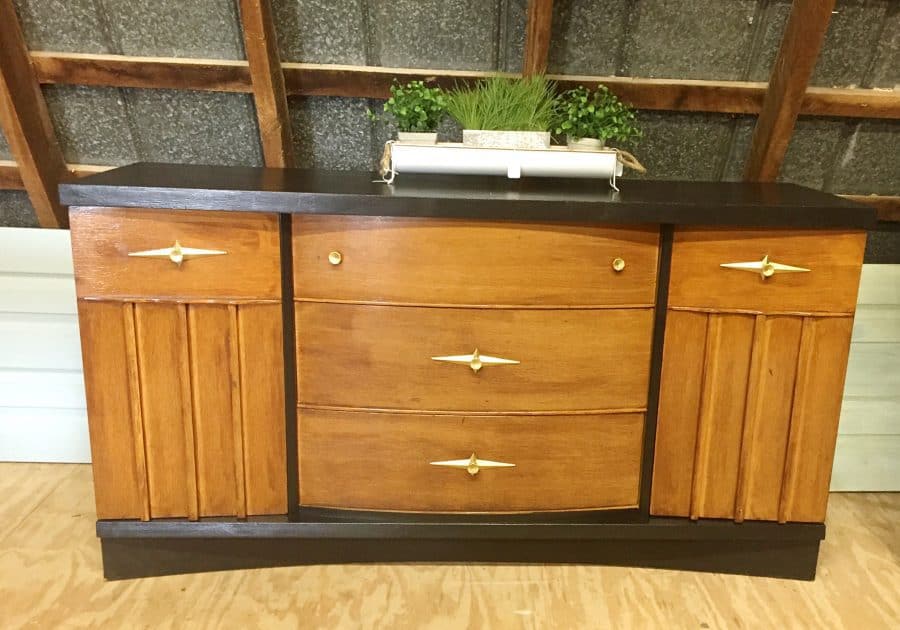
I’m using Shellac over the Bondo. Can i just spray the general area of the Bondo/sanding or do I have to spray the entire piece before painting? Thanks!
If the wood is a yellow or red wood, it’s best to shellac all of it. The tannins will bleed through and ruin your paint job. If not, just shellac the bondo and you’re good to go.